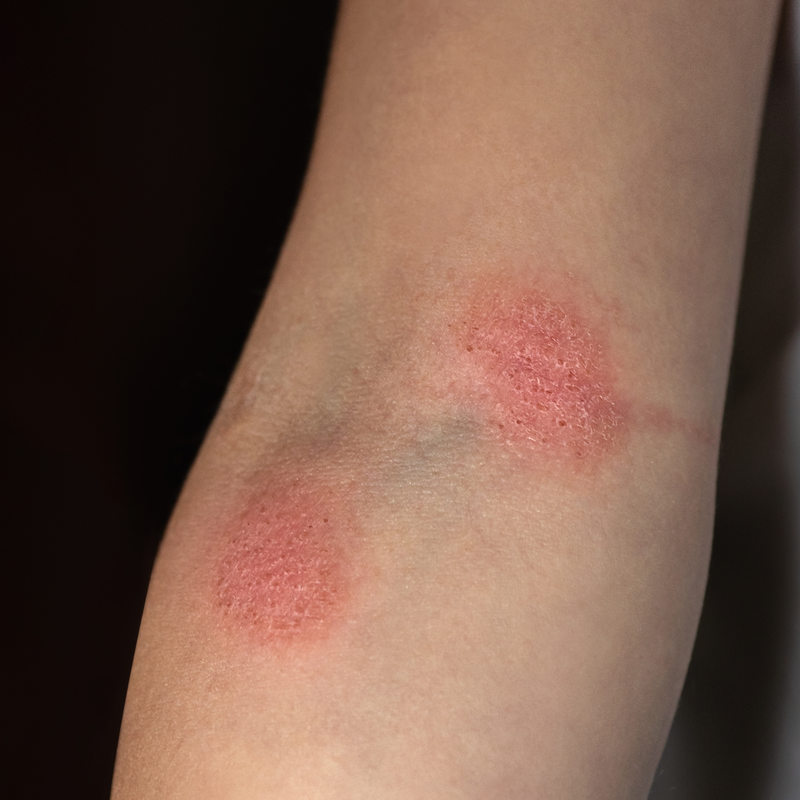
What is mycosis fungoides?
Mycosis fungoides is a disease that originates from the T-lymphocytes. . It is one of the low-malignant non-Hodgkin's lymphomas. The T-lymphocytes are the cells of the immune system that normally attack pathogens. However, in mycosis fungoides, they degenerate and attack the skin. This is why this disease is also called fungal lichen. The causes of this disease are still unknown.
How often does mycosis fungoides occur?
Mycosis fungoides is one of the rare tumour diseases, but it is one of the most common lymphoma diseases ( about 2 %). Mostly, mycosis fungoides occurs in the second half of life, and women are about twice as likely to develop it as men.
What risk factors play a role in the development of mycosis fungoides?
So far, the causes of the disease are still largely unknown. In most other non-Hodgkin's lymphomas, connections to immune disorders, viral infections and certain drugs, genetic factors and ionising radiation have been observed, but not so far in the case of mycosis fungoides.
What are the symptoms of mycosis fungoides?
Often the course of the disease is gradual and is accompanied by uncharacteristic skin changes over several years . The disease is often confused with eczema and psoriasis. In many cases, those affected complain of severe itching in the affected areas. The inner sides of the upper arms and the inner sides of the thighs are particularly favoured areas for skin changes. Dry, reddened, scaly or slightly encrusted patches form there. In most cases, the skin changes only deepen after a few years and affect other layers of the skin. The consequence of this is raised foci, the so-called nodules and plaques, which spread over the entire skin. In the further course of the disease, large fungus-shaped nodules form. If mycosis fungoides is not treated, the disease can spread to the internal organs via the lymphatic system and the bloodstream.
How is mycosis fungoides diagnosed?
A doctor will make a tentative diagnosis based on the patient's medical history and the changes in the skin. Then a biopsy is taken from the affected skin arsenal and examined with the help of a microscope . As a rule, a definite diagnosis is only possible when the tumour has already penetrated deeper into the skin and an increase in lymphocytes can be detected in the blood.
In addition, ultrasound, X-ray, CT and MRI are used as examination procedures . This is to exclude an infestation of the internal organs . Mycosis fungoides is divided into different stages on the basis of the examination results . These stages are important for treatment and . These are essential for the treatment and also for the prognosis:
- Stage I: The so-called eczema stage. The cancer can be seen on the basis of the reddened and scaly spots . The lymph nodes are not enlarged at this stage.
- Stage II: Also called the plaque stage. Nodes and skin conditions may already be present. Lymph node swelling without cancer cells.
- Stage III: In this stage, almost the entire skin is affected. No cancer cells can be detected in the enlarged lymph nodes.
- Stage IV: Not only the skin, but also the lymph nodes and/or the internal organs are affected.
How is mycosis fungoides treated?
In the first instance, the choice of treatment depends on the stage of the disease when the diagnosis was made. In any case, before starting therapy, it should be ensured that the person affected does not have to suffer any more discomfort than that caused by the disease itself. Radiation therapy, chemotherapy and light treatment (PUVA) are considered to be very effective therapeutic approaches.
Radiotherapy
Like all non-Hodgkin's lymphomas, mycosis fungoides is also sensitive to radiation. Local irradiation with electron beams and X-rays may be sufficient to destroy the tumour in cases of limited tumorous skin changes . However, whole skin irradiation is also possible if there is extensive skin involvement without further involvement of organs or lymph nodes.
Chemotherapy
In the advanced stage of the disease, chemotherapy is used if organs and lymph nodes are already affected. This form of therapy aims to kill the cancer cells throughout the body. Drugs like cytostatics work quite well against rapidly growing cells. The treatment takes place in several cycles, which usually last for months. Since the cytostatics used also affect the normal tissue, in most cases there are severe side effects such as nausea, vomiting, hair loss, diarrhoea, susceptibility to infections and an increased tendency to bleed.
Light therapy (PUVA)
In stage I of the disease, PUVA can be used in combination with ointments containing cortisone. Normally, light therapy is used to treat psoriasis. Either the drug psoralen is administered as tablets or applied to the skin . This accumulates in the cancer cells, which are then destroyed with UV-A light irradiation. However, from the plaque stage onwards, PUVA therapy alone is no longer sufficient, but can be used in combination with immunotherapy.
What is the course of mycosis fungoides?
The disease usually progresses very slowly over many years to decades. If mycosis fungoides is diagnosed before the internal organs and lymph nodes are affected, the prognosis is very good and the patients can be cured. In later stages, however, the disease can no longer be cured, but can at least be temporarily stopped by appropriate therapy.
What is the follow-up treatment for mycosis fungoides?
The aftercare of mycosis fungoides depends on the stage at which the tumour was discovered and also on how it was treated. If the tumour was still in the early stage, follow-up care is recommended at intervals of 6 to 12 months. If the tumour was already in stages III and IV, visits to the doctor are necessary every 4-6 weeks to be able to assess the success of the therapy.
